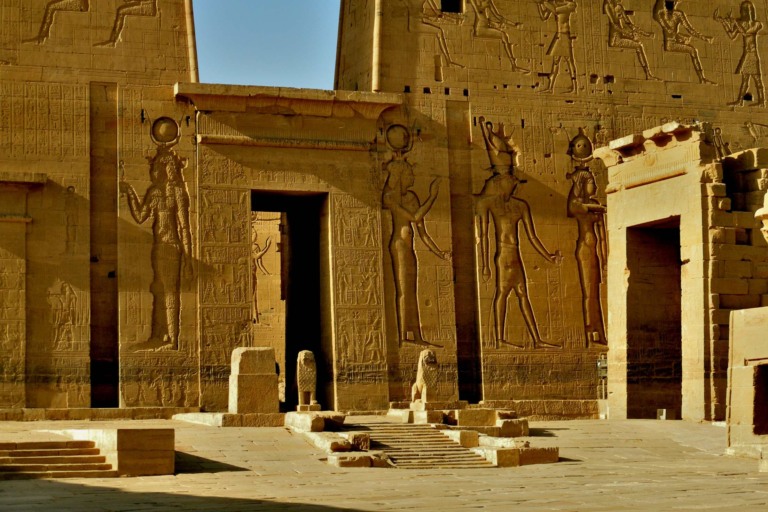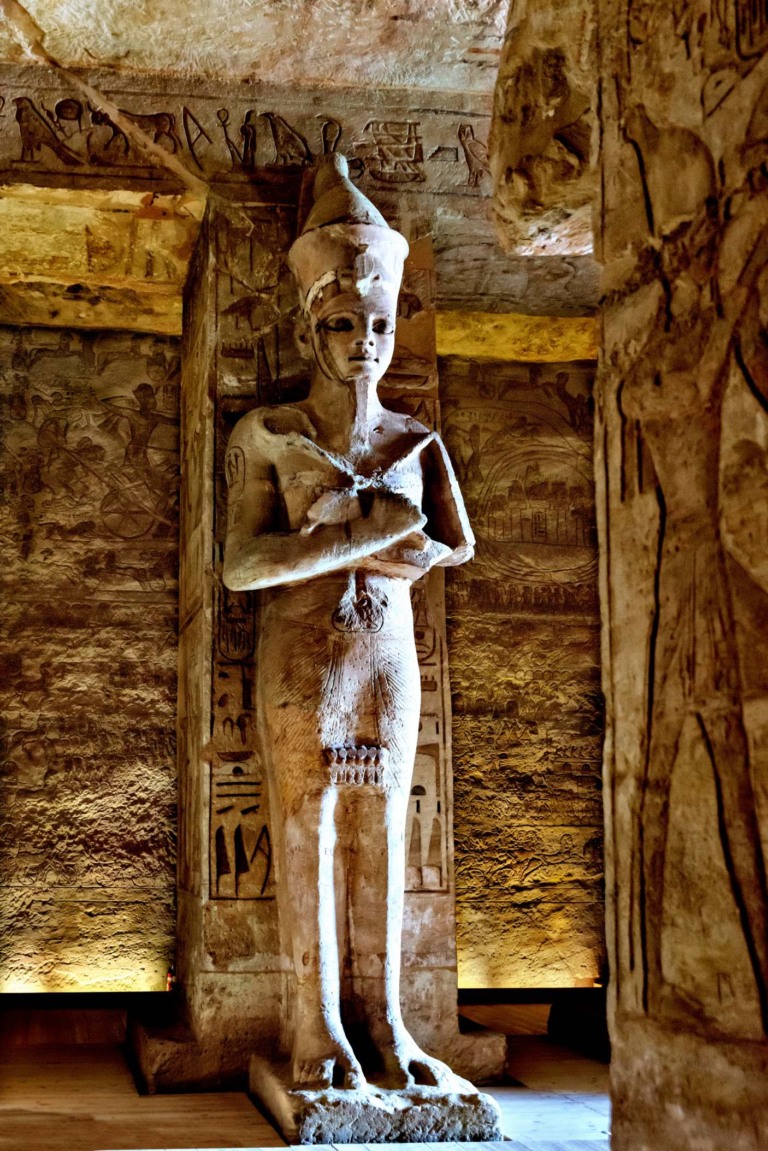Whale Valley, also known as Wadi Al-Hitan, is a significant paleontological site located in the Faiyum Governorate of Egypt. Here’s a detailed overview:
Valley of the Whales Egypt
1. Introduction: Whale Valley, also known as Wadi Al-Hitan, stands as a remarkable paleontological site in the Faiyum Governorate of Egypt. Not only is it recognized for its breathtaking desert landscapes, but, more importantly, it holds a treasure trove of fossils, particularly those of ancient whales. The fossils found here are of paramount significance, offering insights into the evolutionary journey of whales from land-dwelling mammals to marine creatures.
2. Geological and Cultural Context of Whale Valley: Situated approximately 150 kilometers southwest of Cairo, Whale Valley lies in the Wadi El-Rayan Protected Area, near the Al-Katrani mountain range. The region’s geological formations, rich in sandstone and limestone, showcase the remnants of an ancient sea. The valley itself is named after the Basilosaurus, an 18-meter-long whale, with the fossils revealing spines on its tail and the remains of sea creatures in its stomach.
3. Evolutionary Significance and Preservation Efforts: Whale Valley provides a unique window into the past, where ancient whales like the Basilosaurus traversed the waters. Over 390 whale fossils from various species, dating back around 40 million years, have been unearthed at the site.
The Egyptian Environmental Affairs Agency (EEAA) now oversees the protection of Wadi Al-Hitan, transforming it into a national park through collaboration with an Italian-Egyptian program. This concerted effort ensures the preservation of this geological and paleontological treasure.
4. Discoveries and Scientific Contributions: Scientific exploration in the area has been ongoing since the 1800s, with early findings of Basilosaurus bones in 1830. The site’s significance lies not only in the multitude of fossils but also in their state of preservation, with some skeletons remarkably intact.
In recent discoveries, an 18-meter-long Basilosaurus skeleton, considered the only fully complete fossil of its kind, was found in a new dig. This significant finding, coupled with ongoing research by scientists like D. Gingerich, contributes to unraveling the mysteries of whale evolution.
5. Integration of Local and Global Efforts: The Whale Valley of Wadi Al-Hitan represents more than a fossil site; it’s a testament to international collaboration and a convergence of geological and biological marvels. The joint efforts of the Egyptian Environmental Affairs Agency, scientific researchers, and institutions like the National Geographic Society and the University of Michigan exemplify a harmonious blend of local preservation and global scientific curiosity.
As a UNESCO World Heritage Site, Wadi Al-Hitan beckons both researchers and visitors alike to explore the remnants of Earth’s ancient marine landscapes and the evolutionary tales encoded in its fossils.
Prehistoric Whale Valley
During the ancient period, the Mediterranean did not extend as far south as the present-day Tethys Sea. The prevailing belief is that the Tethys Sea shifted northward, leaving behind extensive deposits of sandstone and limestone. These geological remnants are observable in the rock formations of Wadi Hitan.
Today, the region is replete with excavation sites, revealing a treasure trove of ancient marine life, including whales, sharks, petrified mangrove bushes, and fossilized plants. Throughout the valley, one can encounter coral turned into stone, shark teeth, and fossils scattered amidst a captivating desert landscape. Comprising sand dunes, hills, and wind-worn rock platforms, the valley stands as a testament to the forces of nature.
The wind and ongoing archaeological efforts are gradually unveiling hundreds of fossil skeletons that lay buried for millennia in the sandstone formations of an ancient sea. Predominantly, the fossils belong to ancient whales like the Zeuglodon or Basilosaurus, offering a glimpse into a distant era when these majestic creatures roamed between land and sea.
The valley is not just a repository of ancient marine life; it’s also a haven for diverse desert flora, reptiles, migratory birds, and wild mammals such as white deer, Egyptian deer, fennec foxes, and red foxes. Despite the abundance of whale fossils, the exact reason for their concentrated presence remains unknown, adding an air of mystery to this unique geological site.
Initially perceived as a colossal sea creature, the Basilosaurus, meaning “King Lizard,” turned out to be a type of whale that once effortlessly transitioned between terrestrial and aquatic environments. The Whale Valley at Wadi Hitan serves as a poignant illustration of the evolutionary narrative, portraying how whales evolved from land animals to ocean-dwelling beings during a crucial transitional period.
Over the years, meticulous research on excavated skeletons has provided evidence of the final stages of evolution from land to marine animals. This includes the loss of back limbs and a transformation in body shape while retaining some primitive aspects of the skull and tooth structure. The site is a living geological museum, offering crucial insights into the evolutionary journey of mammals.
Fayoum, as a whole, encompasses some of the world’s most captivating geological sites, promising ongoing scientific revelations that may transform these areas into open-air geological museums. With an expansive area of 1,759 square kilometers, the Wadi El-Rayan Protected Area (WRPA), including the southern part of Sinai, attracts a substantial number of visitors, totaling about 150,000 each year, making it one of Egypt’s most frequented protected areas.
Wadi Al-Hitan Facts
- 6. Location: Whale Valley is situated in the Faiyum Governorate, southwest of Cairo, Egypt.
- 7. UNESCO World Heritage Site: In 2005, Whale Valley was designated as a UNESCO World Heritage Site due to its remarkable collection of fossils, particularly those of early whales.
8. Paleontological Significance: Whale Valley is renowned for its exceptional fossil remains, providing a unique glimpse into the evolution of whales. The fossils found here date back to the Eocene epoch, approximately 37 to 40 million years ago.
9. Fossil Discoveries: The site is particularly notable for the discovery of numerous fossilized skeletons of early whales (Archaeoceti), including the Basilosaurus, which is considered one of the best-preserved examples of ancient whales.
10. Geological Features: The landscape of Whale Valley features desert terrain and prominent rock formations. The fossils are embedded in the sedimentary rocks, revealing the ancient marine environment in which these early whales lived.
11. Evolutionary Insights: The fossils found at Whale Valley offer valuable insights into the evolution of whales from land-dwelling mammals to marine creatures. The presence of well-preserved skeletons has significantly contributed to the understanding of this evolutionary transition.
12. Educational and Scientific Value: Whale Valley serves as an outdoor museum, attracting researchers, paleontologists, and visitors interested in the history of marine life. The site’s fossils provide a tangible record of the changes that occurred in the whales’ anatomy and lifestyle over millions of years.
13. Preservation Efforts: Conservation efforts are in place to protect the delicate fossils and the geological formations of Whale Valley. Preserving this paleontological treasure ensures that future generations can continue to study and appreciate the evolutionary history documented in the rocks and fossils.
14. Visitor Experience: Whale Valley is open to visitors who can explore the site, guided by informative signage and educational materials. The experience offers a unique blend of natural beauty and scientific discovery.
15. Cultural and Scientific Collaboration: The significance of Whale Valley extends beyond its scientific value. It represents a collaborative effort between the scientific community, local authorities, and UNESCO to safeguard and promote the understanding of Earth’s natural history.
Whale Valley, or Wadi Al-Hitan, stands as a testament to the fascinating evolutionary journey of whales and serves as a vital hub for scientific research and public education.






